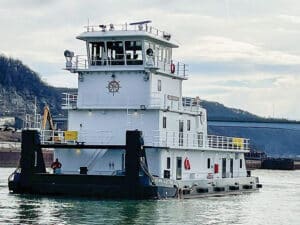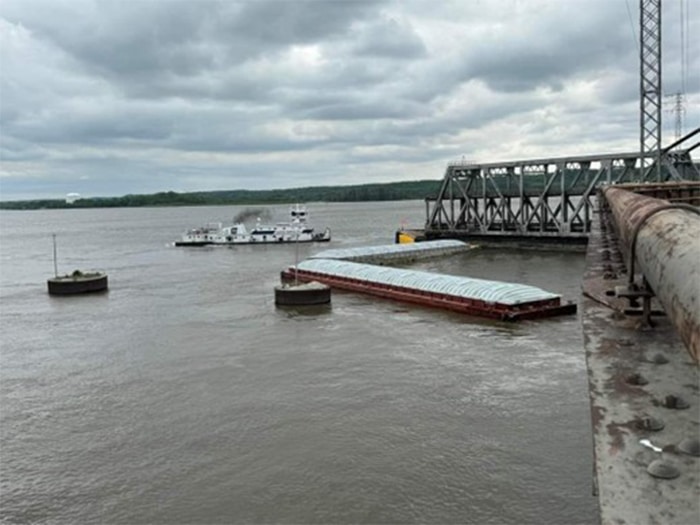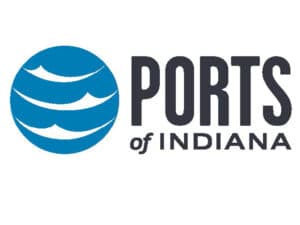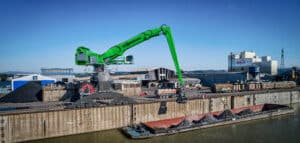
NTSB reports on $3.28M barge tow strike on bridge components
Written by Nick Blenkey
Barges IN122011 and IN155499 immediately after impact blocking the primary channel. The Joe B. Wyatt is shown in the background. [Source: U.S. Coast Guard]
Anticipating a strong cross-current that never materialized, an experienced tow pilot deviated from the sailing line on the Mississippi River and struck components of the Fort Madison Bridge near Fort Madison, Iowa, the National Transportation Safety Board said Tuesday.
The 1982-built, 158-foot towboat Joe B. Wyatt, owned and operated by Ingram Barge Company, was pushing 13 loaded hopper barges and two empty tank barges downriver on May 9, 2024, when the tow struck the bridge’s protection cell and fendering system and broke apart. No injuries or pollution were reported. Damage to the protection cell, fendering system, barges and the Joe B. Wyatt was estimated at $3.28 million.

The pilot had decades of experience maneuvering tows, including through the Fort Madison Bridge’s primary channel. Based on this experience and his anticipation of a cross-current coming from around Dutchman Island, he maneuvered the tow over 200 feet off the sailing line toward the right descending bank. The cross-current, if present at the time, did not have the effect the pilot anticipated. Because the pilot overcompensated for the anticipated cross-current, the 1,153-foot-long tow was out of position as it approached the bridge.
The pilot increased the vessel’s engine power to try to maneuver the head of the tow back toward the center of the channel. Despite his efforts, the third barge in the starboard string contacted the protection cell. The tow subsequently broke apart and 13 of the 15 barges drifted downriver.
“Generally, a sailing line is assigned to a known safe route used by commercial vessels,” the NTSB report says. “A sailing line is developed with consideration of channel depth, current patterns, and any other known obstructions to navigation. A charted sailing line provides for a safe and successful transit when used as a guide, along with the mariner’s own experience and assessment of the existing circumstances.”
Download the full report HERE




